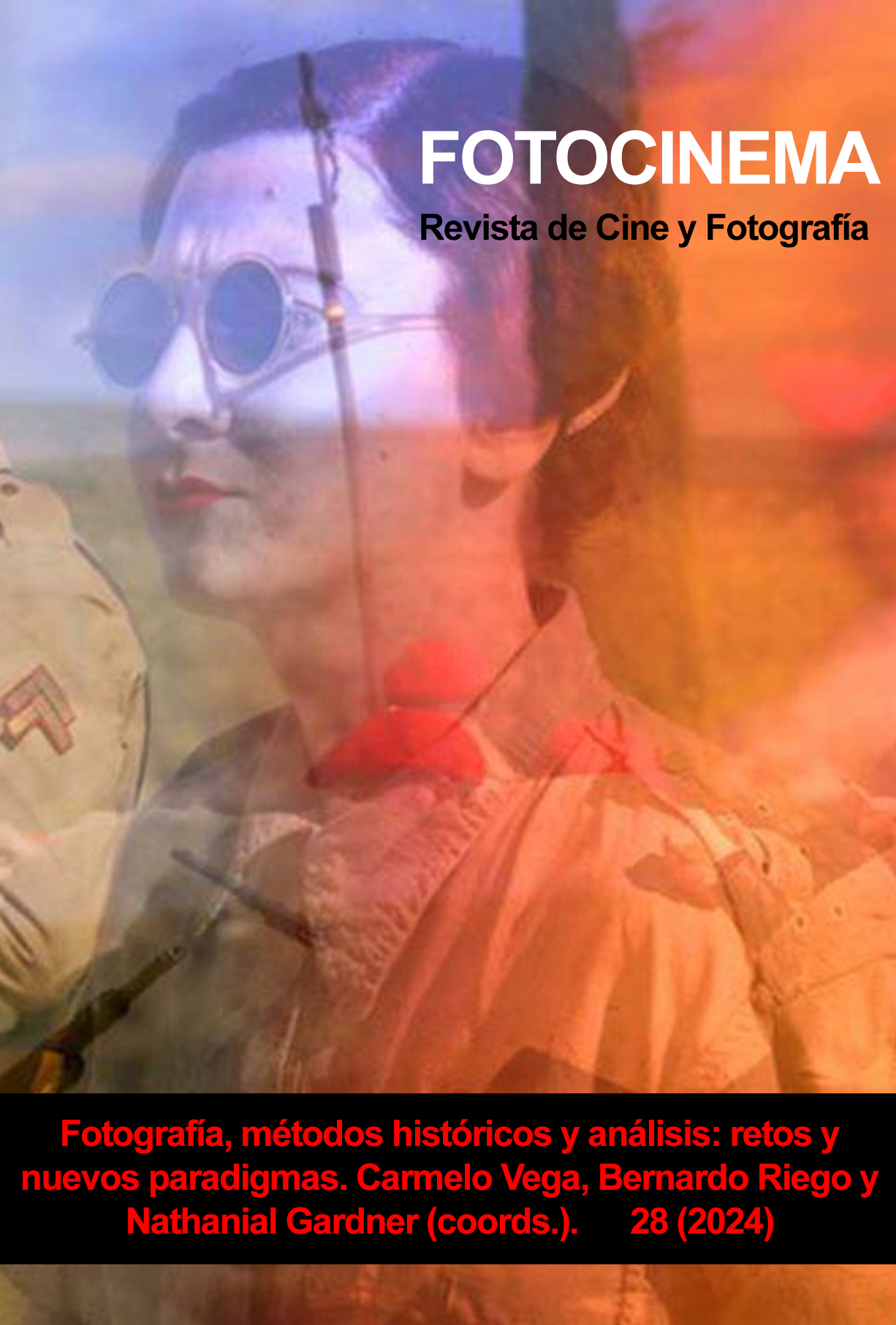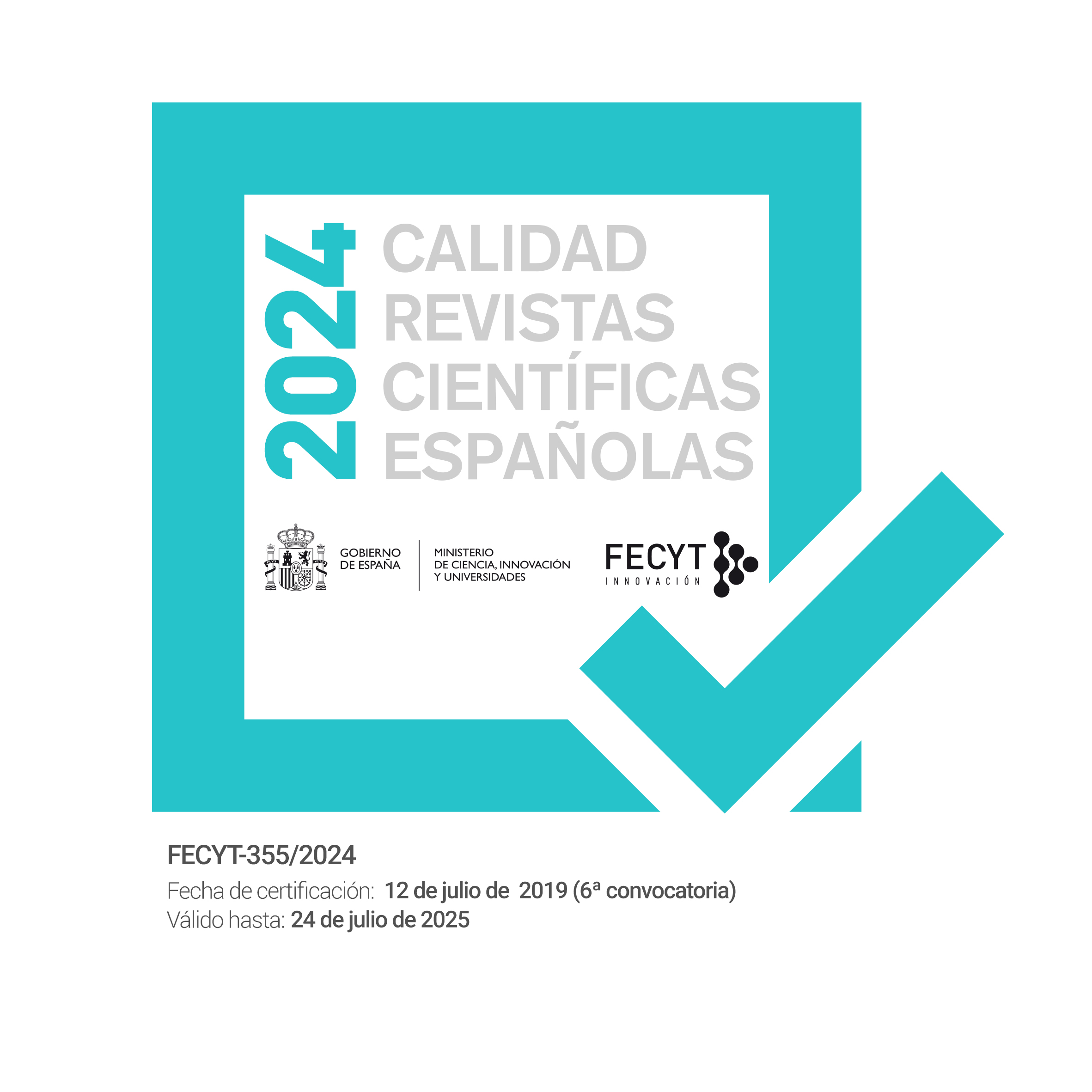A history of photography from amateur practices.
Epistemological and methodological possibilities.
DOI:
https://doi.org/10.24310/fotocinema.28.2024.17691Keywords:
Amateur photography, artistic amateurism, photography and gender, children's photography, working-class photography, queer photographyAbstract
This paper analyses the epistemological and methodological possibilities of the study of amateur photography produced between the end of the nineteenth century and the 1960s, a period in which the historical use of photography declined (Bajac, 2010, p. 54). Amateur photography is understood to be produced outside the productive logics of the professional and artistic fields, without implying its impossibility of ever being monetised or circulating in the institutional spaces of art and artistic photography.
This study is based on the hypothesis that amateurism was one of the pillars on which the invention of photography developed, being, therefore, one of the pre-eminent factors in the history of the medium. It was nuclear in the development of photography, as it participated in a historical process of universalisation of the art knowledge of modernity that made it accessible to different social groups. This study contributes to plural and complex historiographical readings in terms of users, genres, circuits, and utilities. It does so by looking at photographic practice from an intersectional perspective, which broadens and strains the model of the 'art history of photography’ (Phillips 1982, p. 35).
Downloads
Metrics
Publication Facts
Reviewer profiles N/A
Author statements
Indexed in
-
—
- Academic society
- N/A
- Publisher
- Universidad de Málaga
References
Amao, D., Ebner, F. y Joschke, C. (2018). Photographie, arme de classe: la photographie sociale et documentaire en France, 1928-1936. Centre Pompidou, Textuel.
Arago, F. (1839). Rapport sur le Daguérreotype. Bachelier Imprimeur.
Azoulay, A. (2020). Market Transactions Cannot Abolish Decades of Plunder. En T. M. Camp, M. Hirsch, G. Hochberg y B. Wallis (Eds.), Imagining Everyday Life. Engagements with Vernacular Photography (pp. 47-60). Steidl, The Walther Collection.
Bajac, Q. (2010). Après la photographie?. De l’argentique à la revolution numérique. Gallimard.
Barthes, R. (2004). La cámara lúcida. Nota sobre la fotografía. Paidós.
Batchen, G. (2020). Whither the Vernacular? En T. M. Camp, M. Hirsch, G. Hochberg y B. Wallis (Eds.), Imagining Everyday Life. Engagements with Vernacular Photography (pp. 33-40). Steidl, The Walther Collection.
Bonet, V. (2018). El Grup Femení, aposta ferma de l'Agrupació Fotogràfica de Catalunya (AFC). En I. Segura, Carme García. Des del terrat (pp. 12-17). Arxiu Fotogràfic de Barcelona.
Bonnet, I. y Hackett, S. (2023). Casa Susanna. L’histoire du premier réseau transgenre américain 1959-1968. Textuel.
Brown, E. H. y Phu, T. (Ed.) (2014). Feeling photography. Duke University Press.
Bryan-Wilson, J. y Piekutt, B. (2020). Special Issue: Amateurism. Third Text, 34(1), 1-21.
Chalfen, R. (1987), Snapshot Versions of Life. Bowling Green University Press.
Chéroux, C. (2014). La fotografía vernácula. Ediciones Ve.
Daguerre, L. J. M (1838). Daguerréotype: J’annonce au public... Imprimerie de Pollet, Soupe et Guillois.
Díaz Nosty, B. (2022). Periodistas extranjeras en la Guerra Civil. Periodistas, fotoperiodistas, colaboradoras de prensa y autoras de memorias. Editorial Renacimiento.
Dominici, S. (2022). Early photographic federations and the pursuit of collaborative education. Early Popular Visual Culture, 20(4), 388-411. https://doi.org/10.1080/17460654.2022.2087710
Duklewski, M. (2021). Worker's Photography Movement of the 1920's and 1930’s. View. Theories and Practices of Visual Culture, (31). https://www.pismowidok.org/en/archive/2021/31-visuality-of-social-classes/workers-photography-movement-of-the-1920s-and-1930s
Edwards, E. (2012). The Camera as Historian. Amateur Photographers and Historical Imagination, 1885–1918. Duke University Press.
Edwards, S. (2006). Photography: A very short introduction. OUP Oxford.
Gaze, D. (1997). Dictionary of Women Artists: Introductory surveys. Taylor & Francis.
Hibbitt, R. (2020). Dilettantism and Its Values. From Weimar Classicism to the Fin De Siecle. Routledge.
Huhtamo, E. y Parikka, J. (2011). Media Archaeology. Approaches, Applications and Implications. University of California Press.
García Felguera, M. S. (2020). La Fotografía. Una profesión nueva para las mujeres. En C. G. Navarro (Ed.), Invitadas: fragmentos sobre mujeres, ideología y artes plásticas en España (1833-1931) (pp. 276-283). Museu del Prado.
Gómez Barceló, J. L. (2007). Fotografía española en Marruecos: realidades soñadas, ensoñaciones recreadas. Mélanges de la Casa de Velázquez, 37(1), 57-81. https://doi.org/10.4000/mcv.2719
Joschke, C. (2014). Les yeux de la nation. Photographie amateur et société dans l’Allemagne de Guillaume II (1888-1914). Les Presses du réel.
Joschke, C. (Dir.). (2020). Transbordeur photographie: histoire société. Dosier: Photographie ouvrière, 4. Éditions Macula.
Keldjian, J. (2023). El cine doméstico y amateur: archivo, medio y modos. [Tesis doctoral inédita, Universidad de Navarra].
Knott, S. (2015). Amateur craft: history and theory. Bloomsbury Publishing.
Labanyi, J. (2005) Relocating Difference: Cultural History and Modernity in Late Nineteenth-Century Spain. En B. Epps y L. Fernández Cifuentes (Eds.), Spain beyond Spain: Modernity, Literary History, and National Identity (pp. 168–86). Bucknell University Press.
LAIS (2014). Tejedores de imágenes. Propuestas metodológicas de investigación y gestión del patrimonio fotográfico y audiovisual. Instituto Mora.
López Beriso, M. (2022). La doble imagen de la guerra civil española en las fotografías de Claudek. Fotoconnexió.
Marshall, D., Murphy, K. P. y Tortorici, Z. (Ed.). (2014). Special Issue: Queering archives: Historical Unravellings, Radical History Review, 14(3).
Onfray, S. (2019). Mujeres fotógrafas en el siglo XIX español: de lo profesional a lo doméstico. En F. J. García Ramos y U. A. Felten (Eds.), Fotografía [Femenino; plural]. Visiones, ensayos y otros escritos sobre mujeres fotógrafas (pp. 17-40). Fragua.
Phillips, C. (1982). The Judgment Seat of Photography. October, 22, 27-63. https://doi.org/10.2307/778362.
Pichel, B. (2021). Picturing the Western Front: Photography, practices and experiences in First World War France. Manchester University Press.
Pollen, A. (2020). Objects of Denigration and Desire: Taking the Amateur Photographer Seriously. En G. Pasternak (Ed.), The Handbook of Photography Studies. Bloomsbury Academic.
Ribalta, J. (Ed.). (2011). El movimiento de la fotografía obrera (1926-1939). Ensayos y documentos. TF Editores, Museo Reina Sofía.
Rius, N. F. y Peist, N. (2013). Lo fotográfico y el sistema mediador. Valores artísticos, técnicos y comerciales en los inicios de la fotografía. Espacio, tiempo y forma. Serie VII. Historia del Arte, (1), 109-128.
Rius, N. F. y Delgado, L. (2022). Presents, però a la mercè del seu temps. Fotografia i dones a Barcelona (1900-1936). En Mey Rahola, fotògrafa/1897-1959 (pp. 116-127). Museu Nacional d’Art de Catalunya.
Rose, G. (2016). Doing family photography: the domestic, the public, and the politics of sentiment. Routledge.
Sloan, K. (2000). ‘A Noble Art.’ Amateur Artists and Drawing Masters c. 1600-1800. British Museum Press.
Stebbins, R. A. (1992). Amateurs, professionals and serious leisure. McGill- Queen’s University.
Talbot, W. H. F. (1844). Brief Historical Sketch of the Invention of the Art. The Pencil of Nature, (1).
Wolf, E. (2021). “Foto-glaz”: Children as Photo-Correspondents in Early Soviet Pioneer Magazine. En M. Balina y S. Ushakin (Eds.), Pedagogy of Images: Depicting Communism for Children (pp. 119–148). University of Toronto Press.
Wurzer, M. (2022). The social lives of mass-produced images of the 1935–41 Italo-Ethiopian War. Modern Italy, 27(4), 351–373. https://doi:10.1017/mit.2022.33
Wiertz, W. (2020). A Lack of a Name, of Artistic Value, and of a Positive Perception: Overlooking Amateur Artists in Scholarly Research. History of Humanities, 5(1), 111-129.
Downloads
Published
How to Cite
Issue
Section
License
Copyright (c) 2024 Núria F. Rius

This work is licensed under a Creative Commons Attribution-NonCommercial-NoDerivatives 4.0 International License.
All contents published in Fotocinema Revista científica de cine y fotografía are protected under the Creative Commons Attribution-NonCommercial-ShareAlike 4.0 International (CC BY-NC-SA 4.0) license. All about this license is available in the following link: <http://creativecommons.org/licenses/by-nc-sa/4.0>
Users can copy, use, redistribute, share and exhibit publicly as long as:
- The original source and authorship of the material are cited (Journal, Publisher and URL of the work).
- It is not used for comercial purposes.
- The existence of the license and its especifications are mentioned.
There are two sets of authors’ rights: moral and property rights. Moral rights are perpetual prerogatives, unrenounceable, not-transferable, unalienable, imprescriptible and inembargable. According to authors’ rights legislation, Fotocinema. Revista científica de cine y fotografía recognizes and respects authors moral rights, as well as the ownership of property rights, which will be transferred to University of Malaga in open access. The property rights are referred to the benefits that are gained by the use or the dissemination of works. Fotocinema. Revista científica de cine y fotografía is published in an open access form and it is exclusively licenced by any means for doing or authorising distribution, dissemination, reproduction, , adaptation, translation or arrangement of works.
Authors are responsable for obtaining the necessary permission to use copyrighted images.














13.png)



